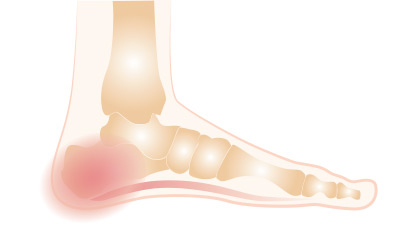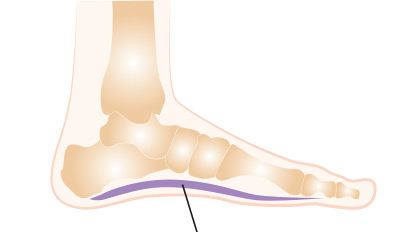It is a bothersome heel pain that can become debilitating. It often occurs after weight gain (such as during pregnancy) or due to intense and repetitive activities (such as intensive sports like running, handball, basketball, and other sports that put a strain on the foot joints).


Heel spurs, Plantar fasciitis
What is the “heel pain” called in French “talalgie” ?
It is an embarrassing heel pain that can become disabling. It appears after a weight gain (pregnancy for example) or following intensive and repeated efforts (intensive sports practice: running, handball, basketball, sports involving the joints of the foot). It May occur after prolonged standing or a shoe change, it shows signs of subsidence at the posterior part of the plantar arch (see drawing above).
It results from a local inflammation of the insertion of the superficial plantar aponeurosis, or plantar fascia, which is a kind of membrane that unites the heel to the toes. This inflammatory phenomenon is the result of micro trauma involving a fonctionnal system: the supro-achilleo-plantar apparatus (see drawing, above).

What is Plantalgia?
It is a pain rather of the soles of the foot. It signs a subsurface of the middle part of the plantar aponeurosis. It can occur as a result of a sports trauma and then manifests itself by a bruise, which indicates a more or less important tear of the fascia.

What is The Differential Diagnosis?
In the presence of a talalgia, a diagnosis arose between a recent or old traumatic aponeurotic rupture, a fibromatous pathology (Ledderhose’s disease), a rheumatic event (SPA: spondylarthritis , Psoriasis, Fessinger Leroy Reiter syndrom) or a tumor, or a neuropathy and insertion pathology of the aponeurosis. Clinical examination and ex. Complements: Radiography , Echography and MRI can help distinguish the etiology.
Additional informations
What is “Talalgie” ? Heel spurs, Plantar fasciitis
Medical Treatment after Conservative Treatment?
The treatment is primarily conservative.
Medical:
- It is often lengthy (3 to 9 months) and involves a stepwise therapeutic approach, with a risk of recurrence. Some forms may be resistant to all treatments:
- Rest: Especially important in cases that occur following trauma.
- Local Care:
- Apply ice several times a day without burning the skin.
- Cold water baths.
- Generally, cryotherapy.
- NSAIDs (Non-Steroidal Anti-Inflammatory Drugs) and Painkillers:
- Typically used in combination with suitable footwear (wear shoes that are a half size larger, high-topped, flexible, without a rigid sole, or sneakers with air cushioning under the heel).
- Heel Pads:
- Made of silicone or with an indentation at the painful point, and eventually orthopedic insoles (see illustration above) – plantar orthotics.
- Weight Loss:
- Essential in cases following weight gain, as it is crucial for breaking the vicious cycle of chronic, resistant inflammation.
- Shock Wave Therapy:
- Never exceed ten sessions, as they can be painful.
- Exercises and Stretching:
- For the sural, Achilles, and plantar system in chronic forms.
- Injections:
- No more than three, recommended sparingly as there is a risk of secondary rupture of the fascia.
Surgical Treatment?
Surgical treatment is exceptionally proposed and never as a first-line option. It is always recommended after a thorough examination, including X-rays, ultrasound, and MRI, and only after the majority of conservative medical measures (at least 6 to 7 out of the 8 steps mentioned above) have failed, and at least one year after the onset of symptoms. When these conditions are met, the success rate of the surgery exceeds 80%.
Anatomical and Functional Reminder
The calcaneus is a compact and solid bone in the rear foot, located in the heel.
- It has a parallelepiped and irregular shape.
- On its posterior surface, the Achilles tendon is inserted, and on its inferior surface, closest to the ground, it gives insertion to the plantar fascia.
- At each step, the heel supports the entire body weight and the propulsion loads of walking, acceleration, and running; this load can reach up to 20 times the body weight.
The Plantar Fascia and Its Function:
- Shaped like a triangle with an anterior base, it extends from the tuberosity to the metatarsophalangeal (MTP) joints of the five toes.
- It transmits the propulsion force from back to front, underpins the internal arch of the foot, and ensures the balance of the entire foot, particularly linking the rear foot with the forefoot.
Heel pain and heel spur:
Terminology
MTP: Metatarsophalangeal joint;
Inflammatory bursitis: serous, reddish, sometimes liquid fluid formation indicative of mechanical friction;
Suro-archilleo-plantar system: An apparatus uniting 3 fibrous structures which act as a united and linked functional unit;
Plantar fasciitis: inflammation of the plantar fascia (plantar aponeurosis);
Planar fasciitis: synonym of plantar fasciitis, confirmed by Echo or MRI when the thickness;
Lenoir calcaneal spine: commonly called the calcaneal spine, described by Lenoir, is a consequence of the inflammation of the insertion of the aproneurosis which reacts to multiple solicitations by calcifying itself before being a cause of pain;
Rheumatic Entesopathy: a talalgia can be found in: SPA (ankylosing spondylarthitis), Psoriasis or FLR disease (Fissinger-Leroy-Reiter);
Leddeerhose disease: fibromatous formation of superficial aponeurosis, equivalent on the plant of Dupuytren’s disease at the palm of the hand, (association in 15 to 25%) evolves with fibrous cords and nuclei that can hurt to support the shoe as if walking on foreign bodies, the treatment is surgical.
